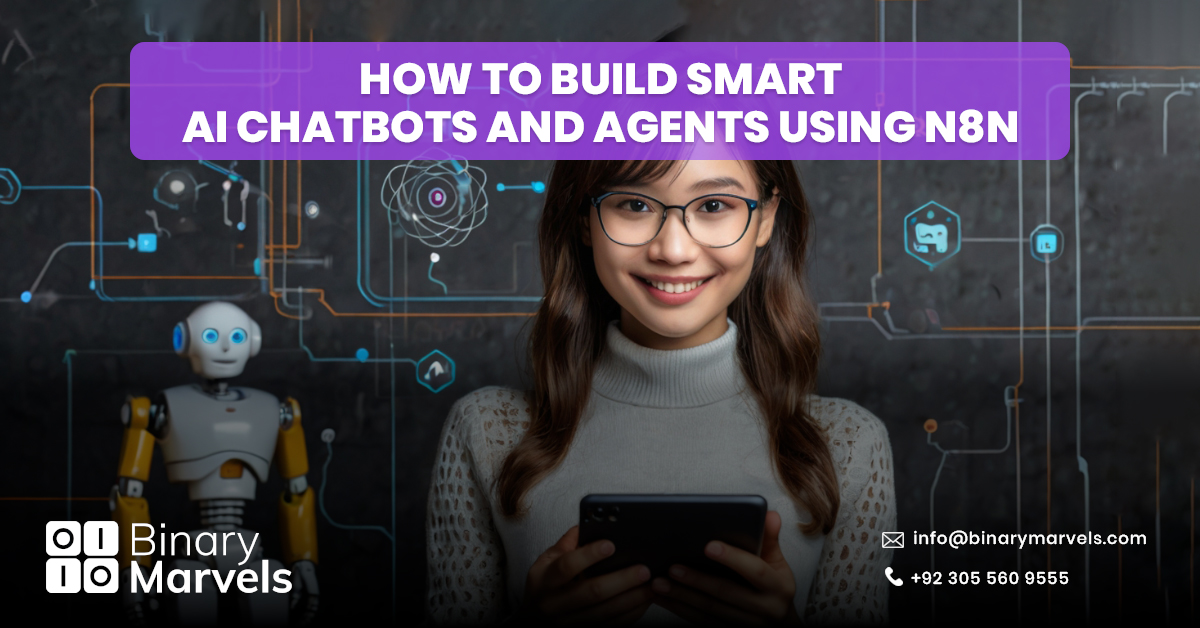
Are you building an AI chatbot but struggling to find the right training data?
Training data is the foundation of any intelligent chatbot or conversational AI system. Without quality data, even the most advanced models can fail to deliver meaningful and accurate interactions. Whether you’re developing a simple FAQ bot or a complex virtual assistant, the type and quality of training data you use will directly impact how well your chatbot understands and responds to users.
In this guide, you’ll discover where to find high-quality training datasets for various chatbot applications. From open-source repositories and commercial providers to domain-specific data and custom dataset creation tips, we’ll explore all the reliable sources you need to build smarter conversational agents.
Also Read: Top 10 AI Companies in Pakistan
What is Chatbot Training Data?
Chatbot training data refers to the structured information used to teach AI chatbots how to understand and respond to human language. This data typically consists of user inputs (questions, statements, commands) and the corresponding responses that the chatbot should give.
Training data plays a crucial role in natural language processing (NLP) and machine learning models. It helps the chatbot learn patterns in language, identify user intent, recognize entities, and generate contextually appropriate replies. The more relevant and diverse the dataset, the better your chatbot performs in real-world conversations.
For example, a customer support chatbot would require training data that includes common customer queries, complaints, greetings, and product-related questions. On the other hand, a healthcare assistant bot would need medical terminology, patient questions, and symptom descriptions.
Types of Training Data for Chatbots and Conversational AI
Different types of chatbots require different kinds of training data, depending on their purpose, complexity, and domain. Understanding the main categories of training data can help you choose or create the most suitable datasets for your project.
1. Intent Classification Data
This type of data helps the chatbot recognize what the user wants to do. Each user input is labeled with a specific intent, such as “book a flight,” “check order status,” or “reset password.” Intent classification is essential for routing conversations accurately.
2. Dialogue Datasets
These datasets include multi-turn conversations between users and agents, allowing chatbots to learn how to maintain context and handle back-and-forth interactions. Dialogue datasets are key for building advanced conversational AI systems.
3. Question-Answer (QA) Pairs
Commonly used for FAQ bots, QA datasets contain a question and a direct answer. They’re effective for bots designed to provide quick and accurate responses to specific queries.
4. Named Entity Recognition (NER) Data
NER training data includes labeled entities such as names, dates, locations, product IDs, and more. This helps the chatbot extract important information from user inputs and use it to generate relevant responses.
5. Voice and Audio Datasets
For voice-enabled chatbots, audio training data with transcripts is necessary. These datasets train speech recognition models to convert spoken words into text accurately.
Choosing the right combination of these data types depends on your chatbot’s functionality, target audience, and desired level of interaction.
Also Read: How to Build Smart AI Chatbots and Agents Using n8n
Best Open-Source Chatbot Datasets
If you’re looking for cost-effective and easily accessible training data, open-source chatbot datasets are a great place to start. These publicly available datasets are widely used by researchers, developers, and startups to train conversational AI models without heavy investment.
1. Cornell Movie Dialogs Corpus
A classic dataset featuring over 220,000 conversational exchanges from movie scripts. It’s ideal for experimenting with natural, human-like dialogue.
2. Persona-Chat (by Facebook AI)
This dataset includes dialogues where each speaker has a predefined persona. It’s designed to help chatbots maintain consistent personality and contextual awareness.
3. DailyDialog
Contains high-quality multi-turn dialogues that reflect everyday communication. It covers a range of topics such as relationships, work, and hobbies, making it suitable for general-purpose chatbots.
4. MultiWOZ (Multi-Domain Wizard-of-Oz)
A large-scale, multi-domain dataset for task-oriented dialogue systems. It includes detailed conversations related to booking hotels, restaurants, taxis, and more.
5. OpenSubtitles
Sourced from movie subtitles, this massive dataset offers diverse and informal conversations. While less structured, it’s helpful for creating chatbots with casual tone and varied vocabulary.
6. Reddit and Twitter Datasets
These social media datasets provide massive volumes of real conversational data. However, they require careful cleaning and filtering due to noise, slang, and ethical considerations.
Open-source datasets are excellent for prototyping and training general-purpose models, but keep in mind that they might need customization or augmentation to fit your specific use case.
Top Commercial and Proprietary Chatbot Datasets
While open-source datasets are a great starting point, commercial and proprietary chatbot datasets offer higher quality, domain-specific relevance, and cleaner annotations. These datasets are typically curated by specialized companies or AI service providers and are ideal for businesses aiming to build reliable, production-grade conversational AI.
1. OpenAI, Google, and Amazon Datasets
Major tech companies often release or sell access to proprietary datasets as part of their cloud AI services. These datasets are refined, diverse, and ideal for training large-scale language models.
2. Data Providers like Lionbridge AI, Appen, and Scale AI
These platforms offer custom-labeled datasets for chatbots, covering industries like healthcare, finance, retail, and customer service. You can request data tailored to your specific use case or audience.
3. Commercial Chatbot APIs with Embedded Training Data
Some AI chatbot platforms like Dialogflow, IBM Watson, and Microsoft Bot Framework include built-in training data with their APIs. By using these platforms, you gain access to pre-trained intent libraries and conversation flows.
4. Industry-Specific Packages
Many companies offer proprietary datasets targeted at specific industries, such as legal, insurance, or education. These data packages save time and reduce the need for manual data gathering.
5. Custom Data Collection Services
If off-the-shelf data doesn’t fit your needs, some providers offer data collection services, including user surveys, chatbot logs, and synthetic data generation.
Although these datasets often come with a price tag, they provide cleaner, better-organized, and more relevant data, which can significantly accelerate chatbot development and improve overall performance.
Also Read: How AI Chatbots Use NLP to Make Conversations Feel Human?
Where to Find Domain-Specific Chatbot Data
For chatbots designed to operate in specialized industries like healthcare, finance, legal services, or education, domain-specific training data is essential. It enables the AI to understand technical jargon, context, and user intent within a particular field—leading to more accurate and helpful interactions.
1. Healthcare Datasets
- MedDialog: A bilingual medical dialogue dataset useful for training clinical or wellness chatbots.
- MIMIC-III: A comprehensive database of de-identified health data from intensive care units, often used in medical AI research.
- Chat logs from virtual health assistants (with consent) can also be a valuable resource.
2. Finance and Banking Datasets
- FinQA and Financial PhraseBank: Useful for building bots that assist with banking queries, stock information, budgeting, and financial advice.
- Proprietary support chat logs and transactional queries can enhance dataset relevance.
3. E-commerce and Retail Data
- Customer service transcripts and product FAQs can be turned into powerful training material.
- Companies may also generate synthetic product-related conversations for chatbots that help with ordering, returns, and recommendations.
4. Education and EdTech Datasets
- Dialogue datasets from tutoring platforms or learning management systems can train bots to assist students with course content, assignments, and scheduling.
5. Travel and Hospitality
- Booking-related interactions, itinerary questions, and location-based queries from platforms like Expedia or TripAdvisor (where permitted) offer great training material.
When domain-specific public data is limited, many businesses opt to create custom datasets using chat transcripts, knowledge bases, or customer feedback—all while ensuring privacy and compliance. This ensures the chatbot is not only intelligent but also context-aware within its industry.
Tips for Creating Your Own Chatbot Training Dataset
While ready-made datasets are helpful, sometimes the most effective way to train a chatbot is to create a custom dataset tailored to your specific use case. Custom data ensures your chatbot speaks the language of your users, understands your business context, and handles real-world scenarios accurately.
1. Collect Real Conversations
Start by gathering real chat logs from customer support platforms, live chat tools, or messaging apps (with proper user consent). These interactions are a goldmine for identifying common queries, intents, and conversation flows.
2. Organize Data by Intent and Entities
Manually label each entry with its intent (e.g., “track order”, “reset password”) and annotate entities (e.g., names, dates, locations). This structure helps your chatbot accurately identify user needs and respond correctly.
3. Use Data Annotation Tools
Platforms like Labelbox, Prodigy, and Amazon SageMaker Ground Truth make it easier to annotate and manage your data at scale. These tools support intent classification, entity tagging, and even audio transcription.
4. Generate Synthetic Data
If you lack real data, you can create synthetic conversations using templates or AI-driven generators. This is useful for rare or edge-case scenarios that don’t occur often in real-world chats.
5. Clean and Balance the Dataset
Remove irrelevant, duplicate, or biased entries. Make sure all major intents are equally represented to prevent your model from being skewed toward only a few types of conversations.
6. Update Regularly
As user behavior evolves, continuously collect and incorporate new chat data. Regular updates help your chatbot stay relevant and responsive over time.
By creating your own dataset, you gain full control over quality, structure, and relevance, which can lead to higher chatbot accuracy and better user experience.
Also Read: How AI Chatbots Improve Lead Qualification and Nurturing?
How Much Data Does a Chatbot Really Need?
The amount of training data required for a chatbot depends on its complexity, purpose, and the type of AI model being used. There’s no universal number, but understanding your chatbot’s scope can help you estimate your data needs more accurately.
1. Simple Rule-Based or FAQ Bots
If your chatbot only needs to handle a limited set of predefined questions and answers (like an FAQ bot), you may only need a few dozen well-structured examples per intent. In such cases, quality and clarity matter more than quantity.
2. AI-Powered or NLP-Based Bots
For conversational AI models that use machine learning or deep learning, you’ll need significantly more data. Each intent should ideally have hundreds of diverse examples to ensure the model generalizes well across different phrasings and user tones.
3. Multi-Turn Dialogues
If your bot is expected to hold a natural, multi-turn conversation (e.g., booking a ticket or troubleshooting a problem), you’ll need datasets with full conversation flows rather than isolated question-answer pairs. These scenarios often require thousands of labeled interactions.
4. Domain-Specific Chatbots
Bots that operate in technical or regulated domains may need less data overall, but that data must be highly accurate, industry-relevant, and often reviewed by subject-matter experts.
5. Transfer Learning and Pre-trained Models
If you’re using a pre-trained language model like GPT, BERT, or similar, you can often achieve strong performance with less training data by fine-tuning the model using a smaller, domain-specific dataset.
Ultimately, it’s better to start with a smaller, high-quality dataset and expand over time rather than overwhelm the model with large volumes of noisy or irrelevant data. Regular evaluation and updates will help ensure your chatbot continues to improve as it interacts with more users.
Legal, Ethical, and Licensing Considerations
When sourcing or creating training data for AI chatbots, it’s critical to follow legal and ethical guidelines. Using data irresponsibly can lead to privacy violations, copyright issues, or biased AI behavior that harms users or your brand’s reputation.
1. Respect Data Privacy Laws
If you’re collecting or using data that includes personal information, you must comply with data protection regulations such as GDPR (Europe), HIPAA (USA, for healthcare), or other local privacy laws. Always anonymize user data and secure consent when required.
2. Check Dataset Licensing Terms
Open-source datasets often come with specific licenses (like MIT, Apache 2.0, or Creative Commons). Understand what’s allowed—some licenses permit commercial use, while others restrict redistribution or modification. Never assume data is free to use without checking the license.
3. Avoid Using Unauthorized Chat Logs
Using customer conversations or third-party chat data without permission can violate privacy and intellectual property rights. If you plan to use business chat logs, inform users and obtain their consent through terms of service or privacy policies.
4. Prevent Bias in Training Data
Biased training data can lead to unfair or offensive chatbot behavior. Regularly audit your dataset for gender, racial, cultural, or language biases, and strive to include diverse voices and perspectives.
5. Credit and Attribution
If you use datasets released by academic institutions or researchers, check if attribution is required. Giving proper credit helps support the open research community and promotes transparency.
6. Ethical Use of AI-Generated Data
If you’re using synthetic or AI-generated dialogues, clearly label them and ensure they don’t mislead users. Be transparent about how your chatbot is trained and the limitations of its capabilities.
Being mindful of these considerations protects both your users and your business while fostering trust and compliance in the development of responsible AI systems.
Also Read: Top 10 Use Cases for AI Chatbots in 2025
Build Your Own Conversational AI Chatbot (With Custom Dataset)
Once you’ve gathered or created your chatbot training data, the next step is building a functional and intelligent conversational AI. Thanks to modern frameworks and tools, you can now develop and deploy chatbots faster and more efficiently using custom datasets.
1. Choose a Development Framework
Select a platform that fits your technical skill level and chatbot goals. Popular frameworks include:
- Rasa: An open-source machine learning framework great for fully customizable bots.
- Dialogflow: Google’s NLP platform with built-in tools for intent detection and entity recognition.
- Microsoft Bot Framework: Ideal for enterprise-grade bots with integrations across Microsoft services.
- Botpress: Developer-friendly and open-source, good for on-premise deployments.
- OpenAI’s GPT API: For advanced generative bots, fine-tune GPT models using your own data.
2. Train the Chatbot with Your Dataset
Once your data is labeled and structured (intents, entities, responses), import it into your chosen platform. Most tools offer user-friendly dashboards or CLI commands to handle training.
3. Test and Iterate
Run your bot through test conversations to identify gaps in understanding or incorrect responses. Adjust your dataset, retrain, and test again. This iterative approach helps improve accuracy and performance.
4. Add Natural Language Understanding (NLU)
Incorporate NLU components to help the chatbot interpret user intent, detect sentiment, and extract meaningful information from input. Most frameworks include built-in NLU or support for external integrations.
5. Deploy on Multiple Channels
After training and testing, deploy your chatbot across platforms like your website, WhatsApp, Slack, Facebook Messenger, or a custom app. Ensure the bot maintains consistent behavior across all channels.
6. Monitor and Improve
Post-launch, collect chat logs, monitor performance, and continue refining your dataset. This helps your chatbot learn from real-world usage and adapt over time.
With the right tools and training data, building your own conversational AI chatbot is not only achievable—it’s scalable and adaptable to your business needs.
Supercharge Your Business with AI Today!
As a trusted AI Development Company in Pakistan, we deliver cutting-edge AI Development Services designed to streamline your operations and enhance customer engagement.
Don’t wait—connect with us now and take your business to the next level!
Conclusion
Finding the right training data is one of the most critical steps in developing a successful AI chatbot or conversational agent. Whether you’re building a basic support bot or an advanced virtual assistant, the quality, diversity, and relevance of your dataset directly impact your chatbot’s ability to understand users and respond effectively.
In this guide, we’ve explored various sources of training data—from open-source and commercial datasets to domain-specific and custom-created options. We also covered best practices for dataset creation, legal and ethical considerations, and how to use your data within popular chatbot frameworks.
As conversational AI continues to evolve, so does the need for high-quality data. By investing time in selecting or crafting the right datasets and continually refining them, you set a strong foundation for creating AI chatbots that are not only intelligent but also trustworthy, responsive, and user-friendly.
Frequently Asked Questions (FAQs)
1. What is a chatbot training dataset?
A chatbot training dataset is a collection of structured conversational examples—typically user inputs and corresponding responses—used to train AI models to understand and generate human-like dialogue.
2. Where can I find a free conversational dataset for chatbots?
You can find free datasets from sources like the Cornell Movie Dialogs Corpus, DailyDialog, Persona-Chat, MultiWOZ, and OpenSubtitles. These are commonly available on platforms like GitHub or academic repositories.
3. What is an intent classification dataset?
Intent classification datasets are designed to train chatbots to recognize what the user wants to do (e.g., “book a hotel” or “check balance”) by labeling each input with a specific intent.
4. Can I use movie scripts to train chatbots?
Yes, movie scripts and subtitle datasets like OpenSubtitles or the Cornell Movie Dialogs Corpus are often used to train chatbots for casual or human-like conversation, although they may need cleaning and reformatting.
5. How much training data do I need for a chatbot?
It depends on the complexity of your bot. Simple bots may need a few hundred examples, while advanced bots could require thousands of high-quality, diverse conversation samples.
6. Is it legal to use Reddit or Twitter data for training?
It can be risky. These platforms have specific terms of service, and scraping data without permission may violate those rules. Use APIs where available and always respect user privacy.
7. What’s the difference between open-source and proprietary chatbot datasets?
Open-source datasets are publicly available and usually free to use (with licensing terms), while proprietary datasets are owned by companies, often more refined, and may require purchase or subscription.
8. How do I build a domain-specific dataset for my chatbot?
You can collect real user conversations, create synthetic dialogues, or use industry-specific data (like medical transcripts or financial queries) and label them according to intents and entities relevant to your domain.
9. What are some examples of conversational AI datasets?
Popular examples include MultiWOZ, Persona-Chat, DailyDialog, DSTC datasets, and customer support logs from platforms like Zendesk or Intercom (if permitted for training use).
10. Can I use chat logs from my business to train a bot?
Yes, but only if you have consent from users and ensure that the data is anonymized and cleaned to protect privacy. This method often yields the most relevant and effective training data for your use case.









